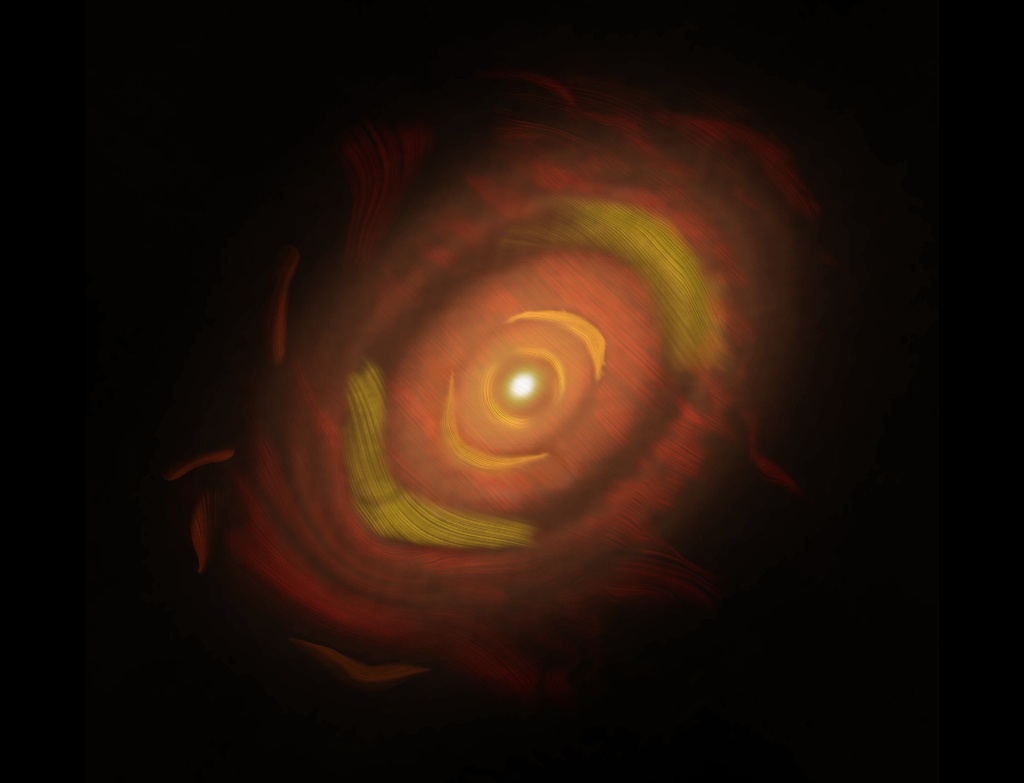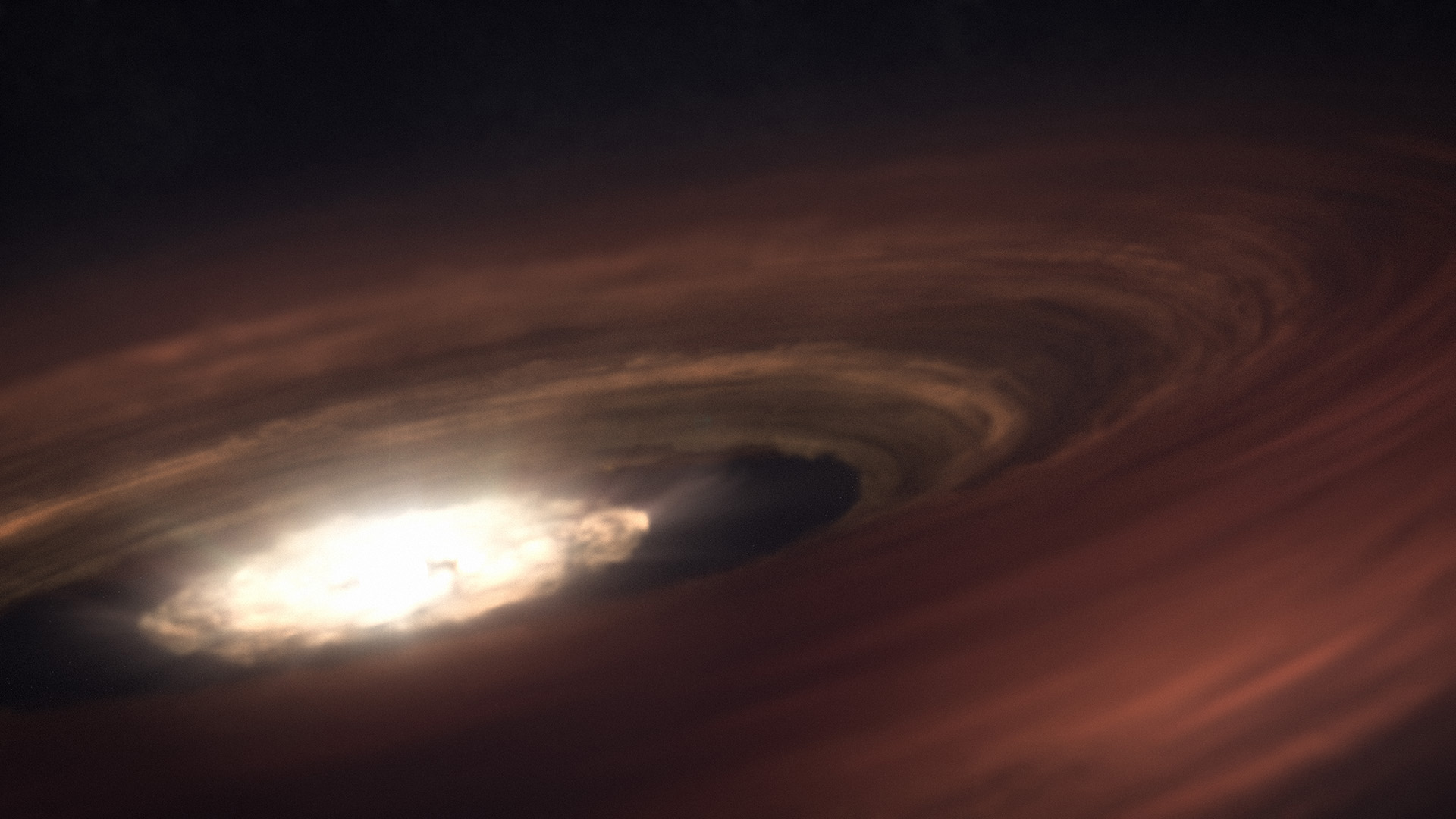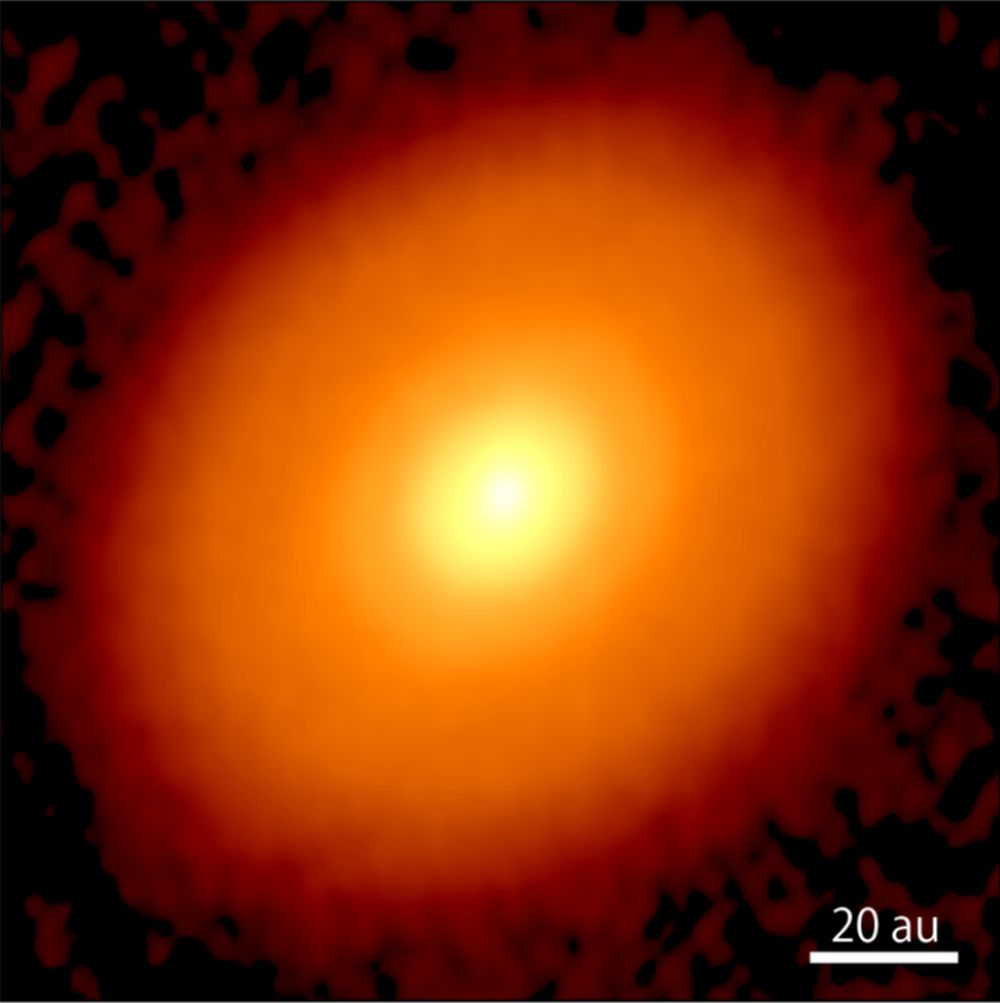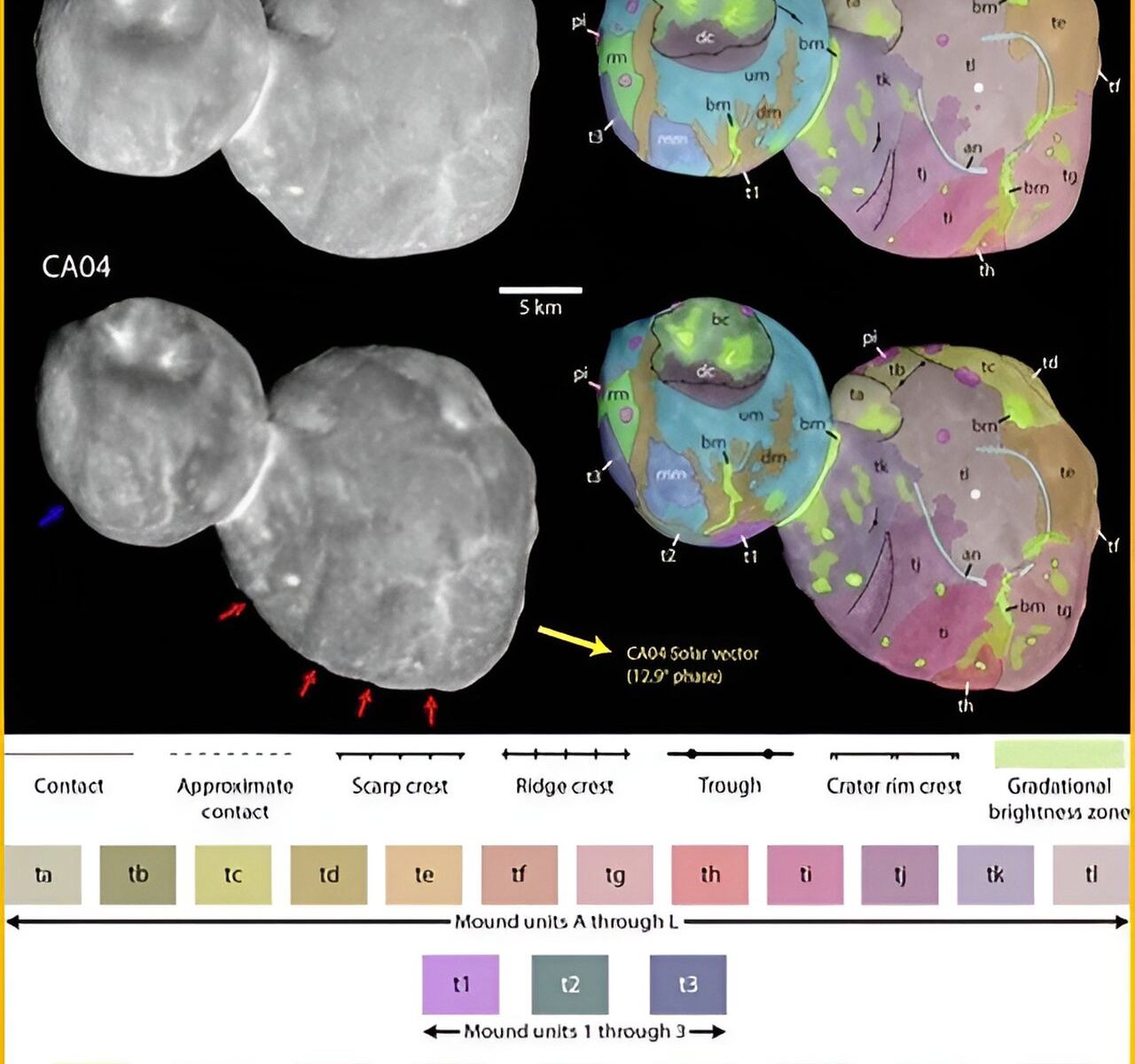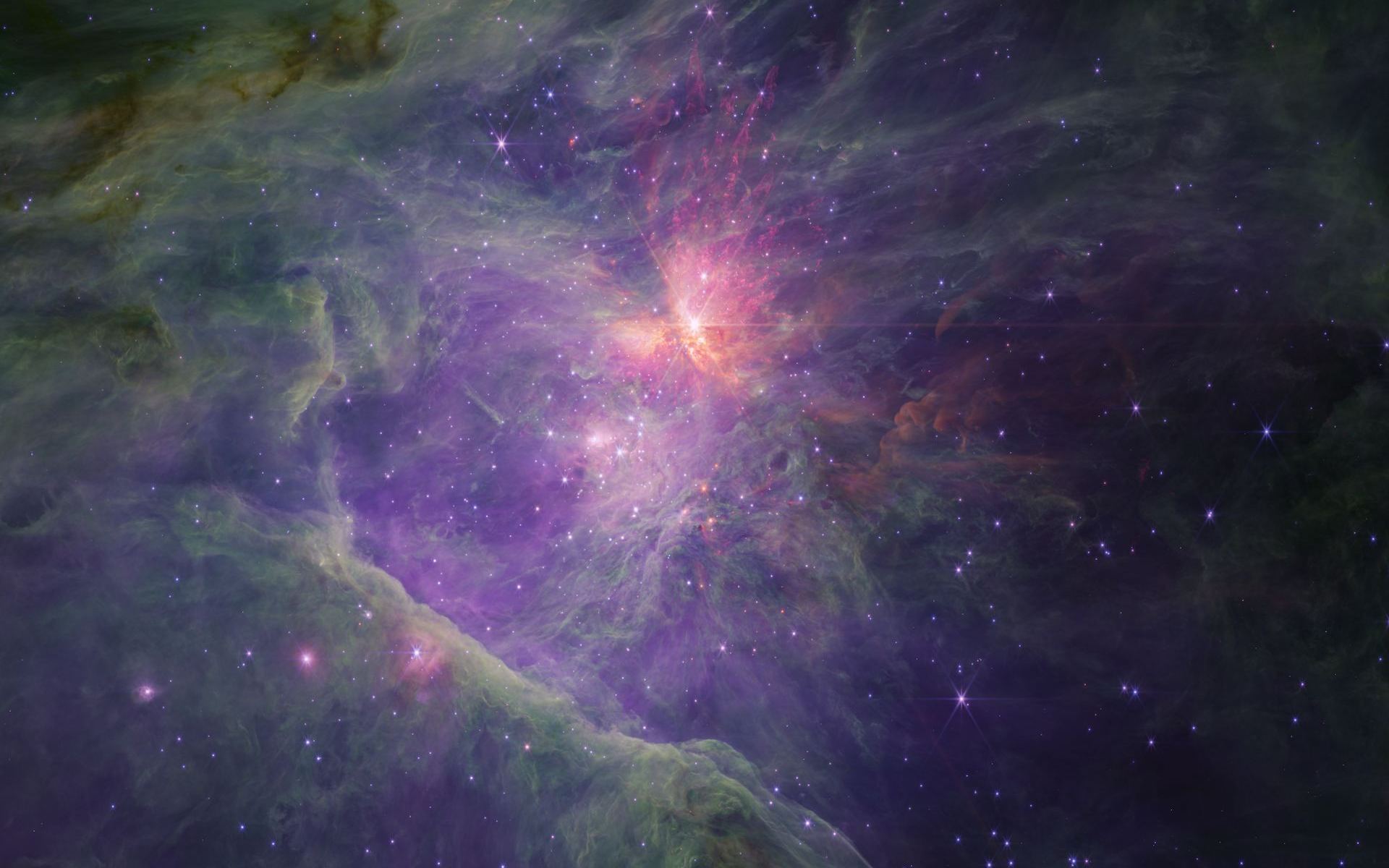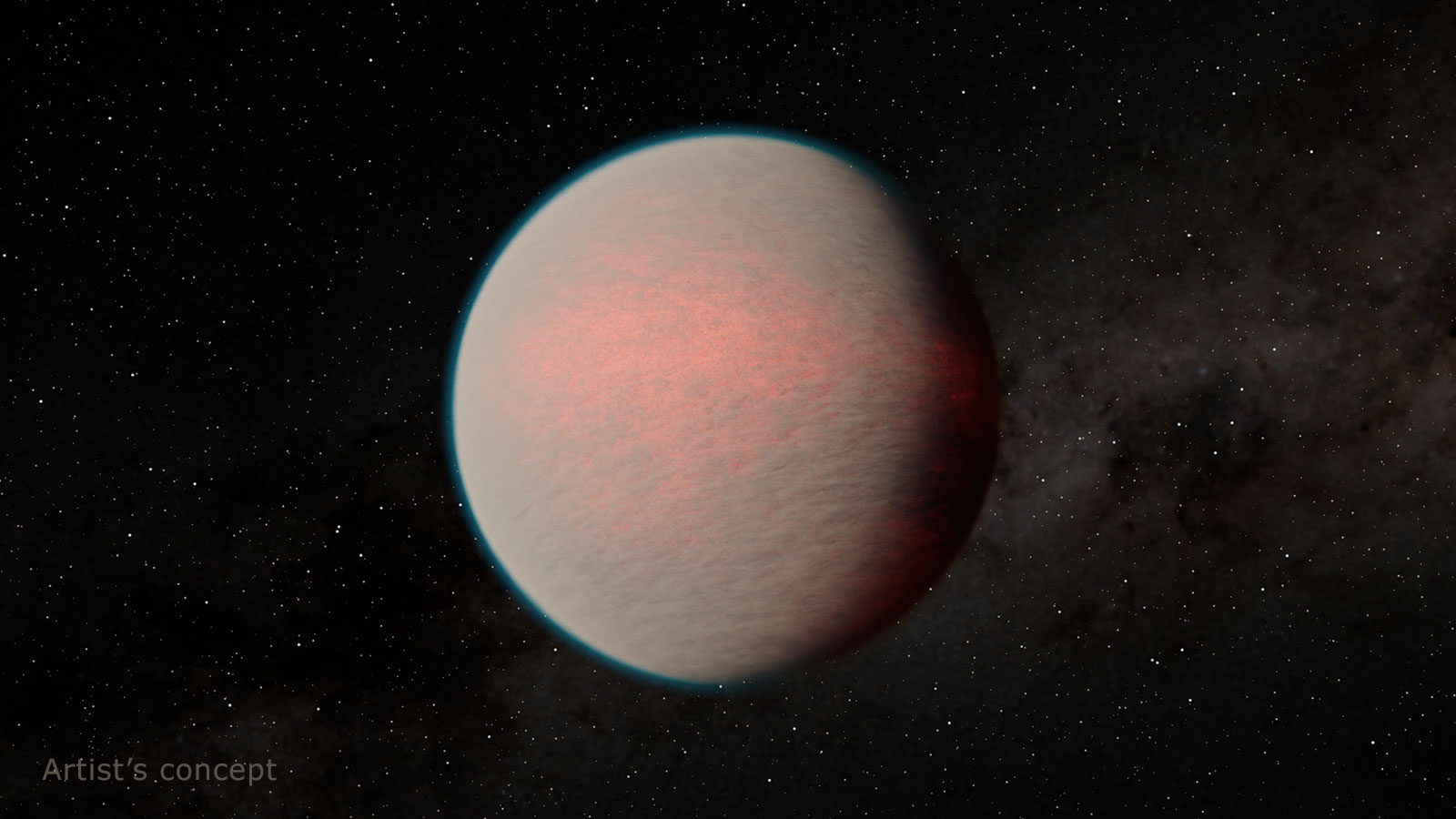The ESO’s Atacama Large Millimeter/submillimeter Array (ALMA) is perched high in the Chilean Andes. ALMA is made of 66 high-precision antennae that all work together to observe light just between radio and infrared. Its specialty is cold objects, and in recent years, it has taken some stunning and scientifically illuminating images of protoplanetary disks and the planets forming in them.
But its newest image supersedes them all.
Continue reading “ALMA Takes Next-Level Images of a Protoplanetary Disk”
